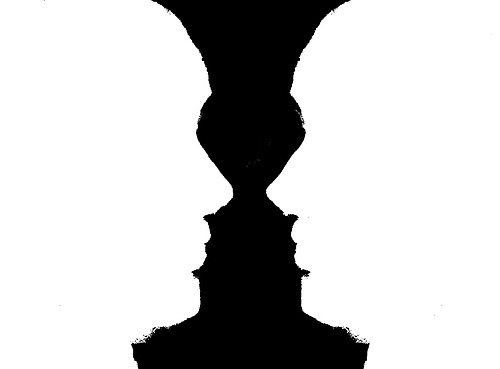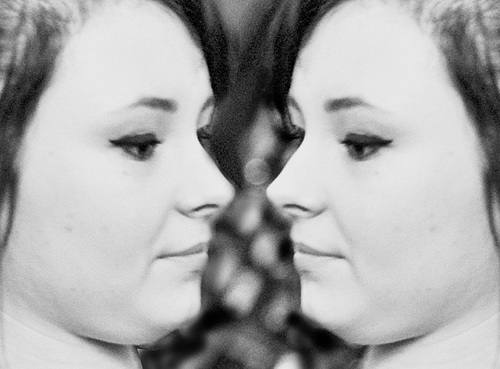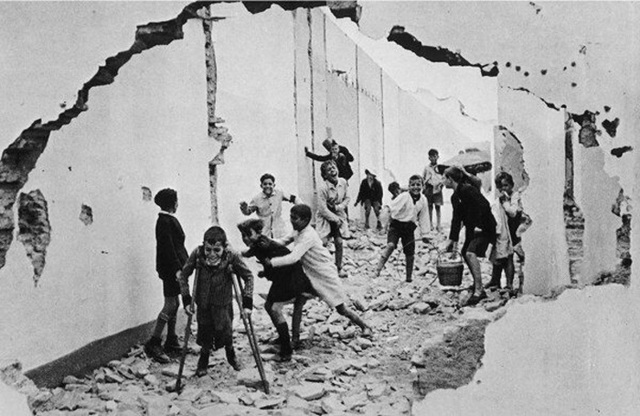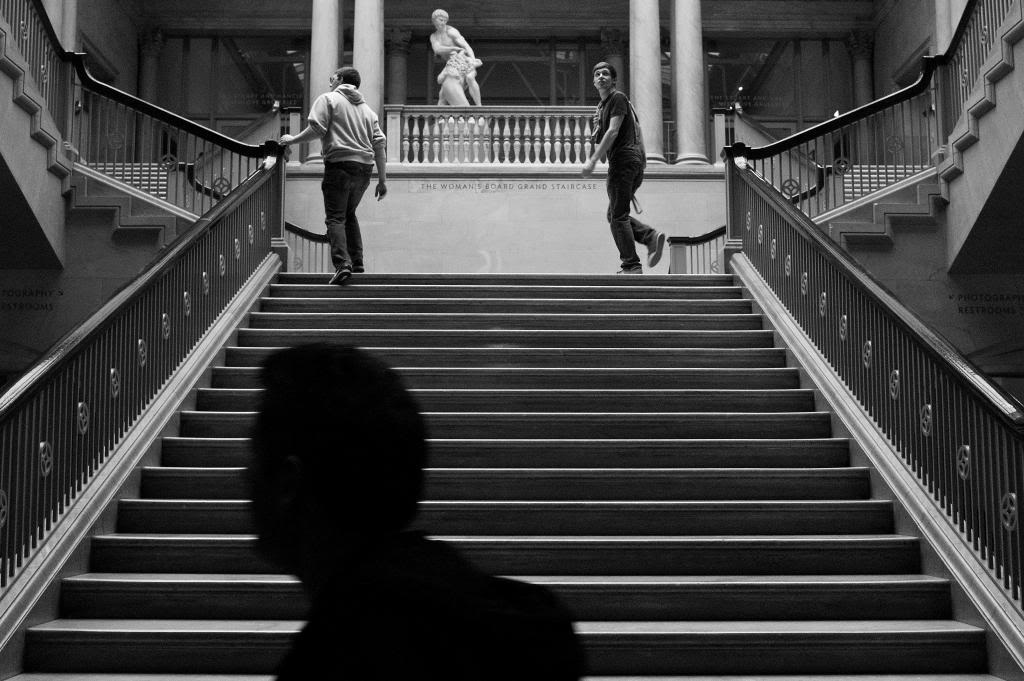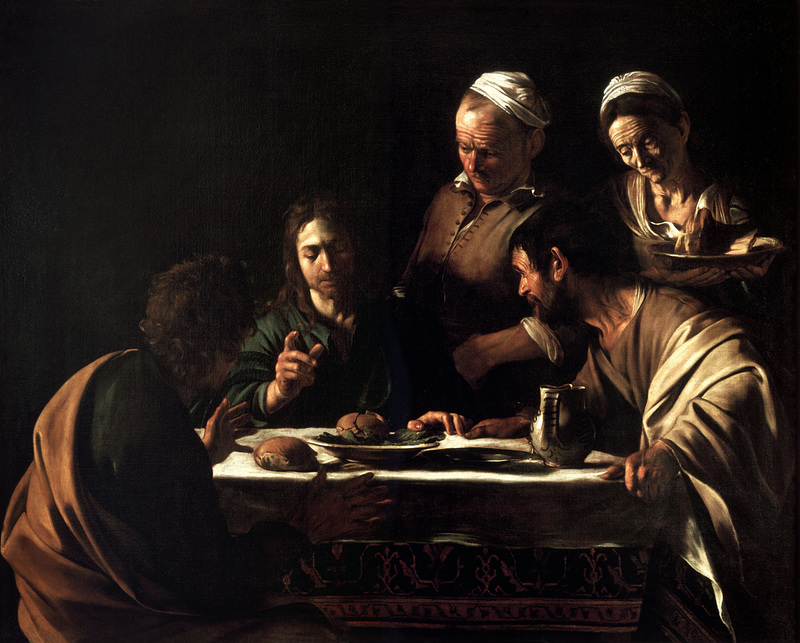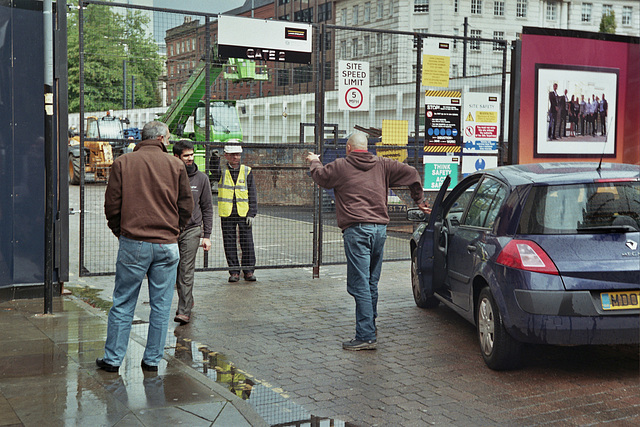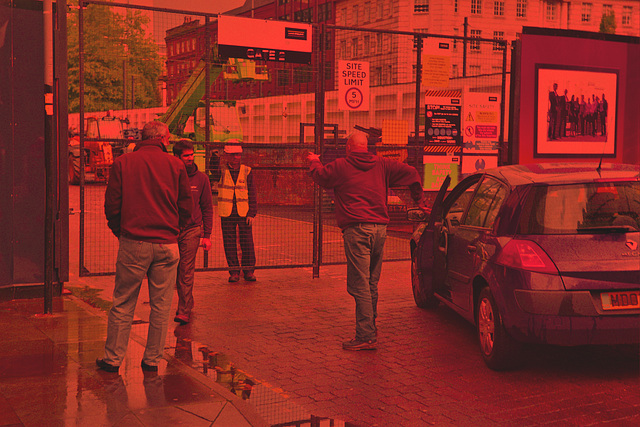-----------------
... this logo, the yin-yang logo or the Tai-Chi symbol according to the interweb, demonstrates symmetry ...
 Yin-Yang
Yin-Yang par
Sparrow ... Stewart Mcbride, on ipernity
... the swastika, Maltese-cross are rotationally symmetrical, Volkswagen, American-Airlines or McDonald's logos are symmetrical on their centreline, Mercedes and Chanel's are both rotationally and centreline symmetrical ... some people will no doubt think designers do this for no good reason ...
... while others think the viewer will naturally seek out symmetry and finds it perceptually pleasing ... the mind will seek out and divide objects into any number of symmetrical parts, it will find it pleasing to detect symmetry ... and pay particular attention to the point of symmetry.
As Lukitas observed of his photograph "Maybe that is what is wrong about this one: all the lines point to the middle, but there is nothing there"
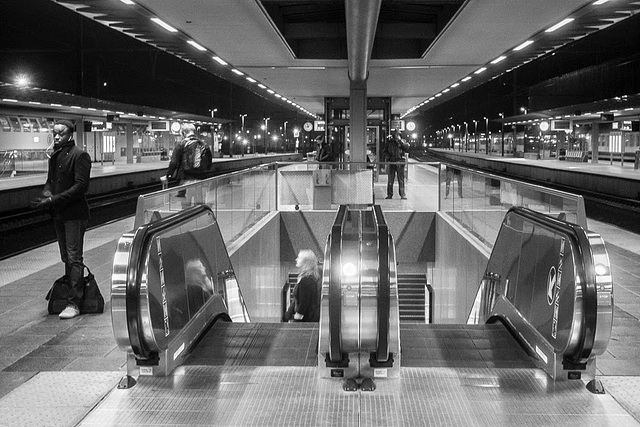
photo by Lukitas
It's not just in the abstract, there is one study that demonstrates the human face to be more attractive the more symmetrical it is, a quick look on the interweb reveals lots of information.
Here, although these are just two rows of six square parenthesis and one by itself ...
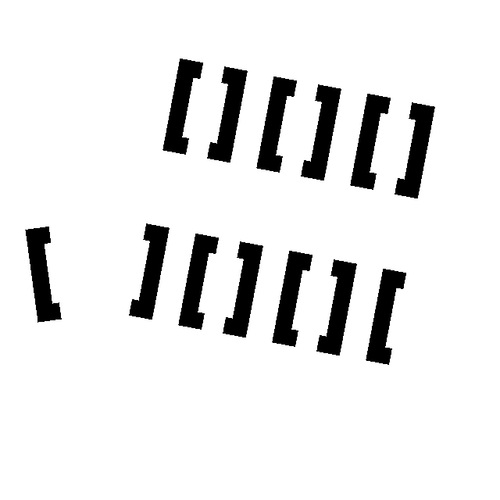 z
z par
Sparrow ... Stewart Mcbride, on ipernity
... the theory predicts the viewer will try to form symmetrical groups and so you'll see three units (with two parenthesis forming each group) on the top row and two whole units with a half unit at each end ... and that you'll go on to connect the lone element to its closest partner, and interestingly the area between the two items becomes an area of particular interest
I'm sure every photographer will be able to look back at shots that drag ones attention to some boring part of the frame ...
 No 40
No 40 par
Sparrow ... Stewart Mcbride, on ipernity
... like the central column on this photo from a project of mine
--------------------
I'm always surprised just how much of the world is symmetrical, nature to a great extent plants in part, all animals that I can think of ... and almost everything manmade of note is symmetrical, yes I know there's Antoni Gaudí but even then you'd not wan't to live in one of them ... all those odd curves and angles would drive you mad ... and imagine decorating!
The other year when I'd just finished my Corfu book I found myself on the island for three weeks with nothing too much do. One gets bored with sunbathing in minutes, so I got in the car and went wandering around. It was a bit like letting my brain defocus like I do with my eyes when I started noticing the geometry of the place. No matter what age or style, geometry and symmetry were everywhere, not just buildings but in surface design and pictures too. No matter what the scale, material or media one looked at.
 No 32
No 32 par
Sparrow ... Stewart Mcbride, on ipernity
 No 10
No 10 par
Sparrow ... Stewart Mcbride, on ipernity
The more complex the symmetry the more we seem be attracted by it, all those Late Gothic cathedrals still being maintained astound people as much now as they did in the fifteenth century ... and are dripping with symmetry, they attract photographer like flies, even though the world already has more than enough photos of churches.
next ... Ground-Figure and Areas of Particular Interest
---------------------






